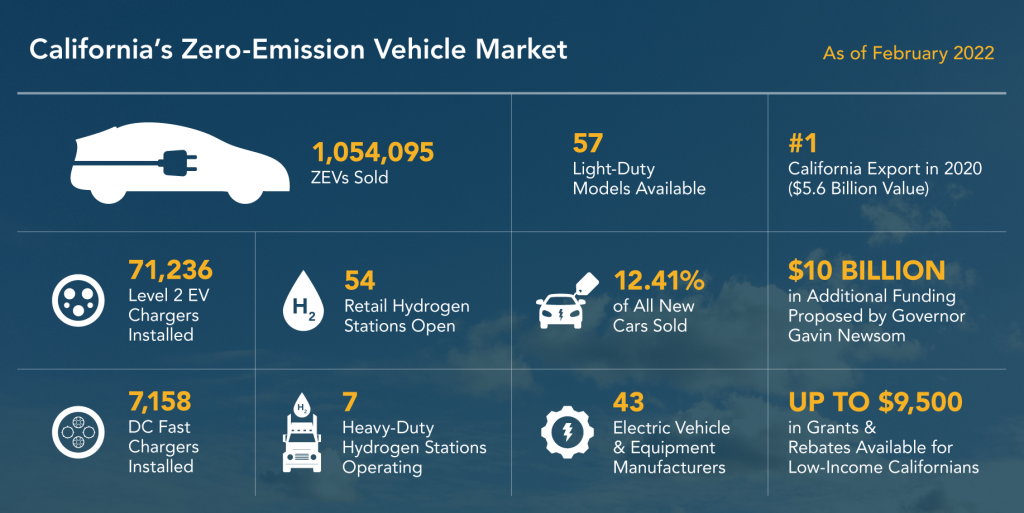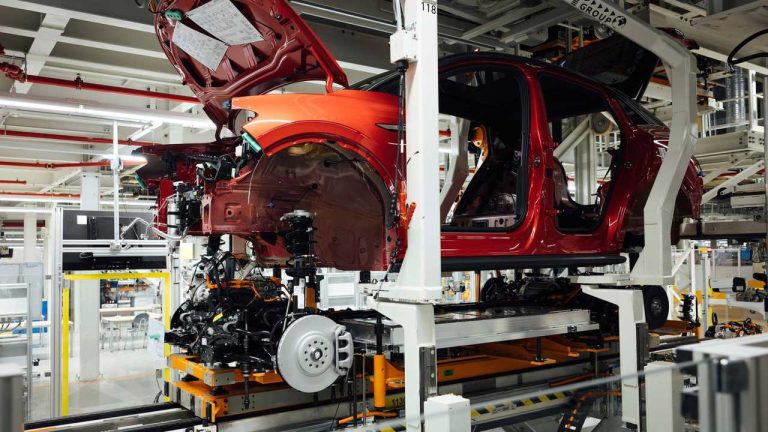EV Makers Charge Forward to Bridge Tax Credit Gap with Bold Discounts

Tax Credit Challenges for EV Manufacturers
The electric vehicle (EV) market is currently at a crossroads. With the federal government’s $7,500 tax credit for EV buyers no longer in play, manufacturers are forced to adjust their strategies in order to keep inventory moving. Automakers have now turned to offering substantial discounts straight from their own pockets, a move that carries both promise and pitfalls. Many in the industry consider this pricing strategy a necessary evil, but there are plenty of tricky parts and tangled issues that come along with it.
At the heart of the matter is the second-generation Chevrolet Bolt—a subcompact crossover set to reemerge in 2027. Initially advertised to hit the market with a price below $30,000 (including shipping), the Bolt has become a symbol for how the EV sector is adapting to a post-tax credit world. In what follows, we take a closer look at the shifting landscape of EV pricing, the hidden complexities in automotive financing, and the broader economic repercussions of these changes.
Discount Strategies Amid Dwindling Federal Incentives
With the expiration of federal incentives, several major automakers are shouldering the cost burden by offering discounts that essentially act as a substitute for tax credits. While this move helps sustain consumer interest and sales, it also forces companies to reconfigure their financial frameworks.
Essentially, the discounts being provided are a direct response to the gap left by federal policy changes. Automakers now create attractive cash-back schemes or reduced lease rates. However, these discounts are not without cost. They eat into profits, and the effects are particularly palpable in companies that were counting on those federal dollars to boost margins. This situation is complicated by a number of factors:
- Short-term profit erosion due to heavy discounts
- Need for quick inventory turnover
- Potential long-term impact on brand positioning and consumer trust
For many businesses in the automotive sector, the task has become one of finding the right balance between offering enough incentive to customers while not undermining their overall financial stability. As manufacturers dive into these discount models, finding a path through such conflicting goals becomes nerve-racking for both industry veterans and new players alike.
Chevrolet Bolt Evolution: Pricing and Market Impact
The announced return of the Chevrolet Bolt for 2027 at a sub-$30,000 price point is a calculated gamble in the evolving EV landscape. Chevrolet is banking on its long-standing reputation as a budget-friendly option to carve out a niche in the growing subcompact electric crossover market.
The Bolt’s re-entry into the market provides several key benefits, including:
- Attracting budget-conscious consumers who might have otherwise been priced out of the EV market
- Offering a competitive alternative to more expensive brands
- Maintaining market share amid increased competition from newer models
Nonetheless, the Bolt’s price cut strategy is not free of potential risks. There is the chance that heavily discounted pricing could ratchet up consumer expectations, forcing competitors to lower their own prices in order to stay relevant. Moreover, the sustainability of such discounts over the long haul remains a point of contention among industry experts who argue that an overly aggressive discount strategy might lead to a race to the bottom in terms of profitability and product quality.
The Bolt’s planned low price also highlights a broader trend in the EV industry—namely, the move towards making electric cars more accessible despite the removal of supportive federal programs. The tactic of slashing prices is seen by many as a short-term fix to a long-term issue: namely, the shifting dynamics of consumer financing and market demand in the post-tax credit era.
Automotive Industry’s Response to Policy Shifts
The sudden absence of federal tax credits has put the onus on automakers to rethink their sales and financing strategies from the ground up. What used to be a straightforward benefit for customers is now replaced by financial deals arranged by the manufacturers themselves. This change represents not only a shift in pricing strategy but also a fundamental rethinking of business models within the auto industry.
Industry players like General Motors and Ford have even taken matters further by using their own financing arms to try to mimic the effects of the expired tax credits. While this proactive move has been warmly received by some consumers, it raises questions about the future structure of auto sales and financing:
- Will automakers continue to subsidize discounts at the expense of company profits?
- Can such models be sustained if sales volumes do not justify the cost?
- What are the potential implications for consumer leasing and ownership models?
These questions are compounded by the fact that the EV market is still relatively young when compared to traditional automotive sectors. This means that while some discount schemes may succeed in the short term, the long-term impact on market health is still as unpredictable as the twists and turns of new technology adoption in any industry.
Financial Impacts and the Hidden Cost Dynamics
One of the more daunting aspects of the current market evolution is the financial strain placed on automakers who opt to finance these discounts themselves. When a business has to resort to using its own funds as a substitute for federal support, it inevitably impacts the bottom line. The hidden cost dynamics here are a subject of much discussion among economists and industry insiders alike.
This situation can be decomposed into several key components:
| Cost Factor | Description |
|---|---|
| Direct Cash Discounts | Immediate price reduction to entice buyers, directly affecting profit margins. |
| Financing Costs | Use of corporate funds or finance arms to offset the removal of tax credits, with associated interest and operational costs. |
| Long-term Brand Impact | The risk that consumers come to expect vaccination-level discounts on EVs, lowering perceived value. |
Every one of these factors necessitates a closer look and careful management from manufacturers. There is a tangible tension between short-term sales boosts and long-term profitability that companies must now balance. The post-tax credit era has led to a model where the margin for error is slim and every financial decision is loaded with potential repercussions.
Reassessing Supplier Contracts and Industry Partnerships
Beyond pricing and financial strategies, the industry is confronting additional layers of complexity in its supplier relationships. Recent discussions have centered around new terms being inserted into supplier contracts, a move that could have significant downstream effects on the manufacturing process. Major companies like General Motors have begun to modify contractual language to better reflect the risks and uncertainties inherent in the current climate.
Supplier contracts now frequently include clauses that address issues such as:
- Escalating cost pressures due to volatile market conditions
- The need for flexibility in manufacturing schedules and deliveries
- Risk-sharing arrangements to handle unforeseen challenges, such as supply chain interruptions or sudden regulatory changes
Adjusting these contracts is not as simple as re-drafting a clause or two. Each revision comes with its own set of little details, requiring both parties to find a common ground while managing expectations regarding quality, delivery timetables, and overall cost structures. Many suppliers, particularly smaller ones, find this process overwhelmingly nerve-racking, given their limited capacity to absorb price fluctuations and operational delays.
Global Supply Chain Challenges and Economic Implications
The complications for domestic EV manufacturers extend well beyond company accounts and supplier contracts. Global supply chains are also reeling from the combined effect of weakening demand, rising costs, and international competition. Germany’s automotive industry, for instance, faces additional headwinds as supplier bankruptcies increase amid a challenging market landscape. In 2025, this trend is predicted to lead to a 30 percent rise in supplier failures, further intensifying an already off-putting situation for the industry.
These issues are a perfect example of how interconnected markets can be. A disruption or delay in one part of the world can ripple across continents, affecting manufacturing outputs, pricing strategies, and ultimately consumer confidence. Some of the key economic implications include:
- A potential slowdown in market growth due to reduced supplier capacity
- Increased pressure on automakers to manage inventories amid unpredictable delivery times
- A reevaluation of global trade policies, particularly in regard to tariffs and export controls
For countries like Canada and China, these challenges are particularly significant. Both regions have positioned themselves as pivotal players in the global automotive arena, and shifts in market dynamics on either side of the Atlantic can have extensive, far-reaching effects. Navigating these global supply chains and managing such intertwined factors requires not only robust financial and operational planning but also a deep understanding of international trade nuances.
The Role of Alternative Financing and Incentive Models
In response to the evaporating federal tax credit, financial innovators in the auto industry are exploring alternative ways to support EV adoption. Many companies are now partnering with banks or creating in-house financing solutions that essentially mimic the benefits of a tax credit without relying on government support. These creative models, while promising, also involve their own set of small distinctions and complicated pieces that need to be managed carefully.
Several alternative financing strategies are emerging, including:
- In-house financing arms offering low-interest loans
- Flexible lease-to-own models that lower the upfront cost for buyers
- Consumer rebate programs tied to specific inventory or seasonal promotions
Each of these models aims to provide buyers with the assurance of an affordable EV purchase, much like the expired federal tax credit once did. However, while these initiatives are gaining traction, they are also subject to market conditions that can quickly turn from encouraging to challenging. Ultimately, figuring a path through these new financial models is as tricky as charting a course in an unfamiliar land, where every twist and turn requires adaptability and foresight.
Marketing Strategies in the New EV Landscape
As automakers refine their approach to financing and discounting, marketing strategies have also undergone major revisions. Traditional advertisements that once proudly boasted federal incentives have been replaced by campaigns that focus on the intrinsic value and technological innovation within the vehicles. Companies now emphasize performance, design, and the promise of future-ready mobility.
This shift in marketing pace gives rise to several subtle distinctions in how messages are communicated to the public. Key points in these new campaigns include:
- Highlighting low starting prices and immediate savings for consumers
- Focusing on cutting-edge technology, safety innovations, and environmental benefits
- Positioning EVs as both an eco-friendly and economically savvy choice
The change in advertisement tactics is also prompting companies to explore digital platforms more aggressively. Automated analytics, consumer surveys, and target-based advertising models are now intertwined with traditional marketing approaches. As a result, the fine points of online engagement become super important—not only for capturing consumer interest but also for building a resilient brand image in a competitive market.
The Impact on the Broader Economy and Small Business Landscape
The shift away from federal tax credits for EVs does not affect automakers and their suppliers alone. The ramifications extend to small businesses and local economies. With the automobile sector serving as a cornerstone for many local industries, any significant changes in manufacturing costs or consumer spending can ripple outwards, affecting employment, sales taxes, and supporting service industries.
Small businesses often find themselves squeezed by these large economic forces. Consider some of these effects:
- Reduced consumer spending on related services such as repairs, maintenance, and accessories
- Potential job losses in supporting sectors as manufacturers adjust to lower margins
- Increased pressure on local suppliers that may already be managing tight budgets and logistic challenges
For local governments, lower sales tax revenue resulting from discounted vehicle sales can translate into budgetary pressures. Additionally, outlooks in business tax laws may be revisited or revised in attempts to stabilize local economies affected by such industry-wide changes. As these dynamics evolve, small businesses are finding it increasingly important to stay agile, adapting their operations and marketing approaches to the new economic environment.
Future Outlook: Is a Post-Tax Credit World Sustainable?
Looking ahead, one of the most pressing questions is whether the new model of internal discounts and alternative financing is sustainable in the long run. While consumers may benefit from lower prices in the near term, the big picture suggests there are several factors that need to be carefully examined:
- Will continuous heavy discounting jeopardize brand prestige?
- How will automakers balance short-term profitability with long-term sustainability?
- Can alternative financing models truly replace the consumer value offered by federal tax credits?
These are real questions that the industry must address. In many respects, the situation is as complicated as it is critical. Automakers are, in effect, taking the wheel in a previously government-led experiment. They now face the challenge of ensuring that the trade-offs they make today do not lead to irreversible financial strain tomorrow.
Moreover, it remains to be seen if the alternative models will not only capture market share but also foster widespread consumer confidence in EV technology. There is a notable risk that if the market shifts too rapidly without adequate financial cushioning, overall consumer trust may erode—a scenario that is both intimidating and off-putting for long-term investors and industry stakeholders alike.
Key Considerations for Stakeholders: A Checklist
For those involved in the business, manufacturing, or financing sides of the EV market, it is essential to have a clear picture of the new landscape. Here’s a quick checklist of key considerations:
- Review internal discount strategies to ensure they remain competitive yet sustainable over time.
- Monitor ongoing shifts in supplier contracts and global supply chain dynamics.
- Evaluate alternative financing models and how they compare to traditional tax-based incentives.
- Assess the long-term impact on brand perception and consumer trust.
- Stay updated on local and international economic policies that could influence manufacturing costs and market viability.
This checklist serves as a starting point for companies looking to figure a path through this full-of-problems phase in the EV market. Every stakeholder—from C-suite executives to small business owners—needs to be acutely aware of not just the immediate benefits but also the hidden costs that come along with such significant transitions.
Lessons from the Past: Comparing Old Incentives with the New Model
It is useful—if not necessary—to compare the earlier system of tax credits with today’s model of manufacturer-funded discounts. Historically, federal tax credits provided a clear, predictable benefit that made budgeting and financing relatively simple for both consumers and producers. The change in this setup has contributed to several new and unexpected challenges.
Let’s take a close look at the contrasts between the two models:
| Aspect | Federal Tax Credits | Manufacturer-Funded Discounts |
|---|---|---|
| Simplicity | Straightforward, with clear eligibility criteria. | Requires careful structuring, varying often by model or region. |
| Cost Allocation | Government cost, indirectly subsidized. | Directly impacts corporate margins. |
| Consumer Expectations | Uniform benefit for all qualifying buyers. | Potential for inconsistent deals that vary over time. |
The table above clearly shows that while the federal tax credit system offered simplicity and consistency, the transition to manufacturer-driven discounts introduces a host of new, tangled issues. These include more challenging accounting, the need to tailor offers to different market segments, and the potential for consumer confusion as deals change frequently.
Operational Challenges and Inline Strategies
The operational side of the EV industry is also grappling with several tricky parts linked to the ongoing changes in pricing and financing. Many manufacturers are actively piloting new management strategies to cope with the transitional period. These operational adjustments span multiple areas, such as sales, service, and supply chain coordination.
For example, operational challenges include:
- Reconfiguring sales processes to handle in-house financing options
- Training sales staff to clearly communicate the benefits of these alternative models
- Coordinating with supply chain partners to ensure that discount-induced spikes in demand do not lead to inventory shortages
Notably, these adjustments bring their own set of little twists that need detailed planning and exact execution. The overall challenge is to securely bundle these new discount and financing initiatives with a robust operational framework—one that can handle everything from internal cost allocation to external supplier relationships.
Adapting to a Changing Regulatory Environment
The EV market is not only influenced by internal manufacturer decisions and consumer demand but also by shifts in business tax laws and regulatory policies. Recent trends show that governments in different regions are rethinking their approaches to supporting EV growth. This evolving regulatory landscape means companies must continuously get into the fine points of policy, ensuring they remain compliant while still competitive.
Key aspects include:
- Staying abreast of changes in federal and local business tax laws
- Monitoring international regulations, particularly in major markets like China and Europe
- Anticipating shifts in environmental standards which can impact production costs and supply chain logistics
For automakers, it is essential to have legal and regulatory teams that can quickly sort out new requirements. These teams must figure a path through not only direct policy changes but also the subtle details of how such changes affect internal financing, discount strategies, and supplier relationships. Many in the industry describe these tasks as intensely nerve-racking—yet absolutely super important to the sustained health of their business.
Future Product Guide and the Road Ahead
As we look to the future, the EV industry is compelled to innovate not just in technology, but also in how it finances and markets its products. Tools like detailed product guides and digital platforms are more essential than ever before. With every new model, such as the refreshed Chevrolet Bolt, the industry has the chance to reset consumer expectations and redefine what it means to be competitively priced in a post-tax credit world.
Manufacturers are increasingly focused on producing comprehensive future product guides that not only detail specifications but also educate consumers about the total cost of ownership in a dynamic market. These guides often cover topics such as:
- Comparative cost analyses including in-house financing vs. bank financing
- Long-term operational costs of owning an EV
- Environmental impact and regulatory compliance information
An effective product guide ensures that buyers are fully informed, helping them weigh the advantages of a lower up-front cost against potential long-term expenses. It’s a balancing act that requires companies to clearly communicate both the benefits and the hidden costs—a process that is as intricate as it is critical.
Brand Perception and Market Positioning in Turbulent Times
One of the less obvious, yet profoundly influential aspects of this unfolding situation is the impact on brand perception. For decades, many automakers built their reputations on offering value for money, innovation, and reliability. As they transition from reliance on government-backed tax credits to self-funded discounts, there is the potential for a perceptible shift in how these brands are viewed by the public.
Several notable challenges and opportunities arise in this context:
- Maintaining a premium brand image while offering steep discounts
- Ensuring consistency in customer service and vehicle quality regardless of price fluctuations
- Utilizing targeted marketing to explain the nuances of the new financing models to consumers
For instance, while heavy discounting can drive sales, it may also inadvertently signal that the product is less valuable, thereby undermining the brand’s prestige. On the flip side, if managed well, this strategy could position forward-thinking companies as industry leaders willing to innovate boldly in the face of changing economic conditions.
Looking Beyond: The Role of Emerging Technologies
The evolution of the EV market is closely intertwined with broader tech innovations in the automotive sector. Companies are incrementally adopting advanced technologies such as AI, machine learning, and cutting-edge battery management systems. These advances not only improve vehicle performance but also offer new opportunities to manage the operational hurdles introduced by evolving financial strategies.
Emerging tech solutions can help in several ways:
- Using analytics to predict market trends and adjust discount levels optimally
- Implementing smart supply chain management to avoid production delays
- Enhancing customer experience through digital interfaces that simplify financing explanations
Adopting such technological innovations is a small yet crucial piece of the puzzle that can allow companies to thrive despite the new economic realities. By integrating these tools, the automotive industry can find its path forward even amid the most intimidating of challenges.
Final Thoughts: Adapting in a Time of Change
The current state of the EV market—characterized by the end of federal tax credits and the rise of underwritten discounts—illustrates a broader lesson in business adaptability. The automotive industry is, in many ways, learning to get around a less predictable environment that is loaded with issues and unexpected cost dynamics.
As manufacturers recalibrate their strategies, several core themes emerge:
- Innovation in financing and marketing is not optional but a survival tactic.
- Every decision involves weighing short-term gains against possible long-term drawbacks.
- The role of supportive technologies and smart operational strategies is more critical than ever.
While these tricky parts are undeniably intimidating and off-putting for some, they also present an opportunity for the industry to reformulate strategies that could lead to a more resilient and consumer-friendly market. The road ahead is full of twists and turns, yet it also brims with possibilities for companies that are willing to take a closer look at how fundamental changes in policy and consumer behavior can reshape the industry.
In conclusion, the move towards rotating away from federal tax credits towards manufacturer-funded discounts represents more than a simple price adjustment; it signals a broader rethinking of business models in the automotive world. From the Chevrolet Bolt’s upcoming re-launch to shifts in supplier agreements and financing models across the board, every element of the industry is being put to the test in these challenging times. The outcome of this transition will ultimately depend on how well industry leaders can balance immediate needs with strategic, long-term planning—a balancing act that is as tricky as it is critical.
Summary: A Roadmap for the Future in the EV Sector
As we step into a post-tax credit era, the following points serve as a practical roadmap for companies and investors in the EV industry:
- Reassess pricing and discount strategies to ensure long-term financial sustainability.
- Invest in alternative financing methods that can replicate the benefits of tax credits.
- Revamp supplier contracts to incorporate flexibility in response to global supply chain issues.
- Leverage emerging technologies to optimize operations and enhance customer experience.
- Communicate transparently with consumers about the nuances of these new financial models.
Each of these strategic points is intertwined with the broader themes of innovation, adaptation, and resilience that define our modern economy. Car manufacturers and small businesses alike must work together to steer through these challenging times, ensuring that progress in technology and sustainability continues to brighten the road ahead, even when traditional supports have faded away.
Ultimately, the automotive industry’s current adjustments may well turn out to be a lesson in agility and forward-thinking. The expensive discounts provided today could pave the way for a more robust, consumer-oriented market tomorrow. There is no short-cut in steering through these dense, twist-filled economic conditions—only the commitment to continuously evolve, learn from every subtle detail, and make decisions that support both the bottom line and customer satisfaction.
As we watch these massive shifts unfold, one thing is clear: change is in the air, and every stakeholder in the EV industry must be ready to figure out their own path forward in a world that is shifting rapidly. The survival of established brands like Chevrolet—and indeed the whole of the EV market—will depend on their ability to absorb the costs today in order to drive future innovation and consumer trust tomorrow.
Originally Post From https://www.autonews.com/manufacturing/an-ev-pricing-after-tax-credit-1013/
Read more about this topic at
EV makers fill tax-credit void with costly discounts
Cheap void fill? : r/Flipping




